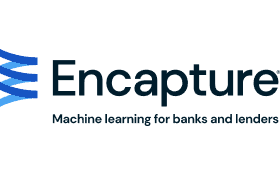
Time to Automate All Bank Processes
Brought to you by Encapture

The uncertain economic environment, with a recession likely on the horizon and inflation driving up costs, has given banks a unique opportunity: revisiting their existing compliance and operational systems, and exploring long-term, scalable solutions in response to looming and increasing regulatory pressure.
Leveraging machine learning and automation to power digital transformation can address the concerns that keep bank directors up at night – especially since financial institutions may be expected to begin providing more data over the coming months. This comes at a time when banks are dealing with a number of external challenges; however, bank directors know they cannot skimp on adherence to strict compliance requirements. Missing a revenue goal is unfortunate, but from what we’ve heard from our customers, missing a compliance requirement can be a devastating blow to the business.
Increasing Regulatory Risk
Banks and other lenders may encounter financial strain in adding more compliance staff to their teams to address new regulations. Among them, Section 1071 of the Dodd-Frank Act requires financial institutions to report demographic information on small business loans. Regulators are reworking the Community Reinvestment Act. In response, banks are considering how they can leverage automated compliance systems for fair lending, loan servicing and collections.
Bankers are quick to acknowledge that the manual processes involved in data verification should be eliminated if their institutions have any hope of staying ahead of the curve. Furthermore, labor shortages and increased competition for talent has increased costs associated with these tasks – yet their necessity is imperative, given regulatory scrutiny.
As loan originations decrease during an economic slowdown or recession, it may look like delinquency rates are increasing as the ratio of delinquent loans to originations increases – even with no notable changes in delinquency cases. The increasing ratio could trigger scrutiny from the regulators, such as the Consumer Financial Protection Bureau.
If that happens, regulators look into whether the borrower should have received the loan in the first place, along with any fair lending bias concerns, and whether the bank followed appropriate procedures. Regulators will scrutinize the bank’s loan servicing and collections compliance procedures. Given that traditional manual reviews can be more inconsistent and vulnerable to human error, this becomes an incredibly risky regulation environment, especially where data integrity is concerned.
To mitigate risk and increase operational efficiency, banks can use end-to-end document processors to collect, verify and report data in a way that adheres to existing and pending regulation. Implementing these processes can eliminate a large portion of time and labor costs, saving banks from needing to recruit and hire additional compliance professionals every time fair lending and servicing requirements become more demanding.
Automated Processing
Lenders like Oportun, a digital banking platform powered by artificial intelligence, have found that leveraging intelligent document processing has reduced the cost of handling physical documents and traditional mail by 80%, increased margins, lowered instances of human error and improved data integrity. Enhancing customer experiences and providing quality data are crucial for Oportun; this makes their operational goals more cost-effective and scalable, and increases the capacity for Oportun’s team.
“[Automation] has helped us establish some strong controls around processing mail and servicing our customers,” Veronica Semler, vice president of operations at Oportun, says. “It’s reduced the risk of mail getting lost … it has increased our efficiency and made things easier for our team members in our stores.”
Institutions that leverage automated systems and machine learning for compliance can reduce labor costs, provide customers with high quality, efficient service and deliver accurate data to regulators. This provides companies like Oportun, which was an early adopter of machine learning, with an advantage over competitors that use traditional manual review methods.
Implementing document automation into existing systems allows banks to address compliance concerns while laying the groundwork for growth. Automation systems provide the tools for banks to reduce friction in lending and operations, enhance their controls and reduce human error – giving boards confidence that the bank can provide accurate, quality data ahead of any new fair lending and servicing regulations. Now is the time for boards and executives to recession-proof their banks and facilitate long-term success by investing in automation for document processing.


